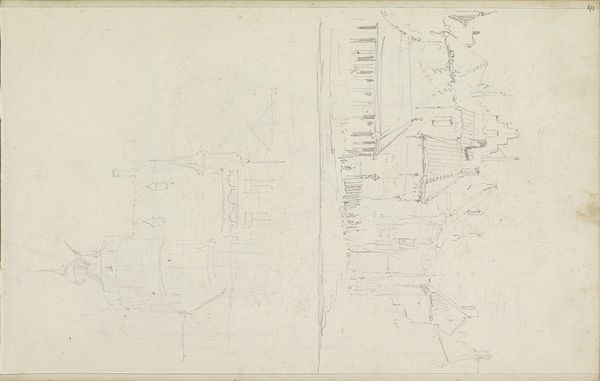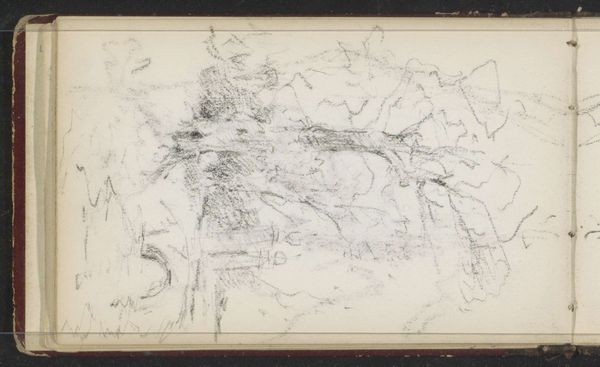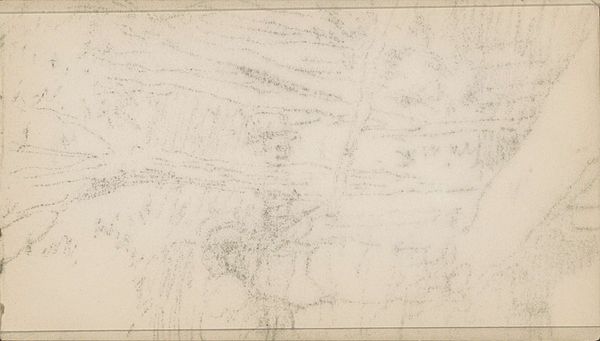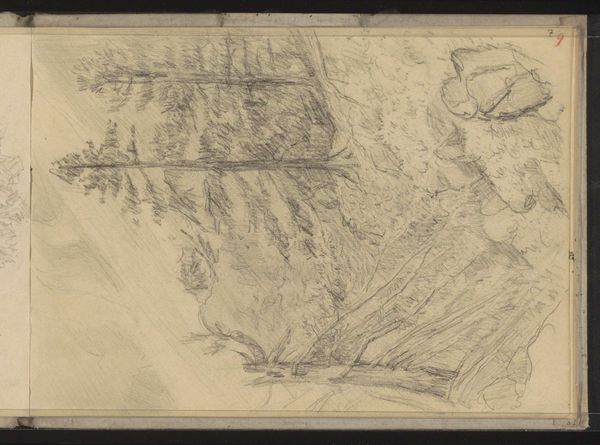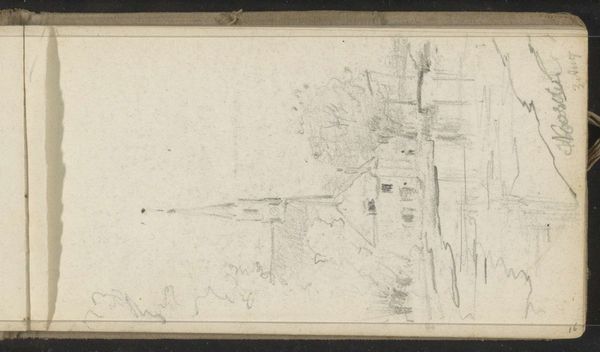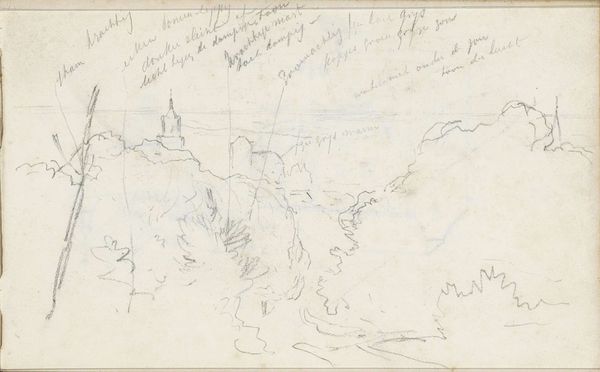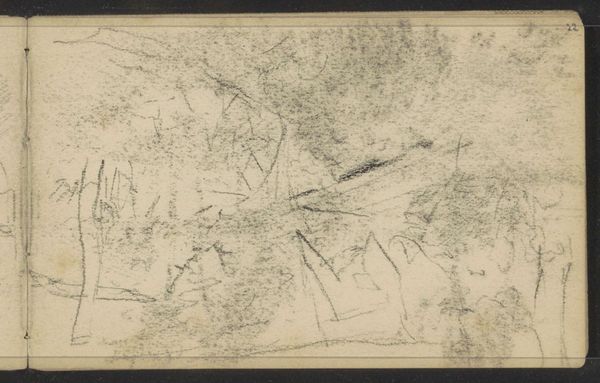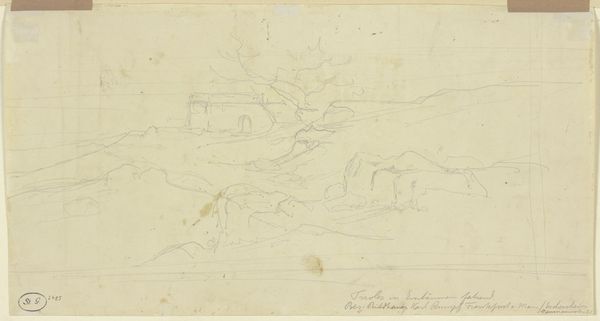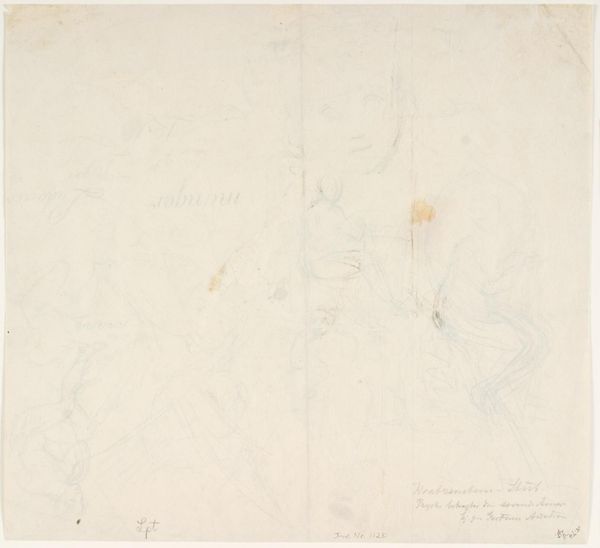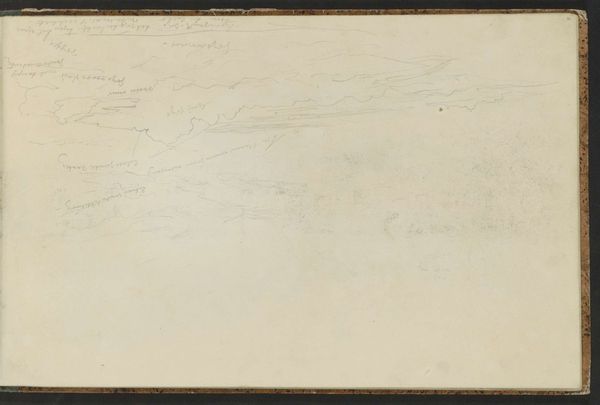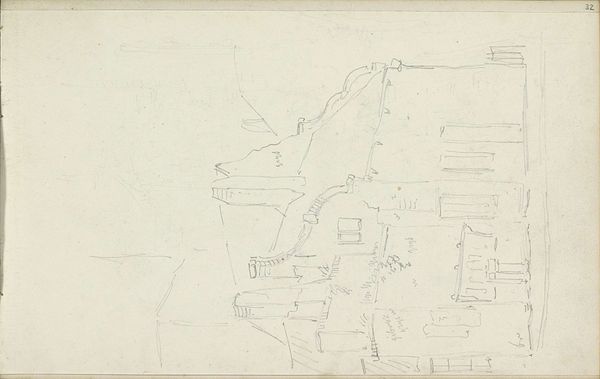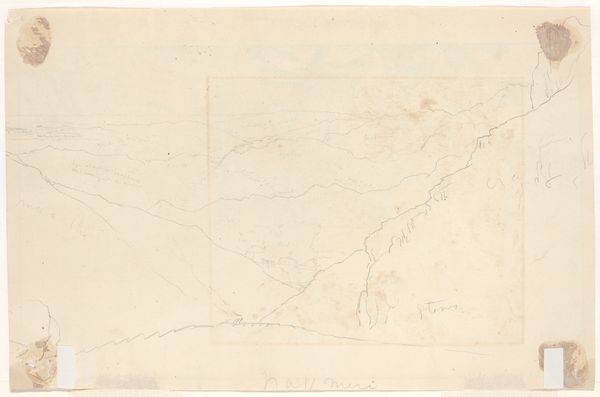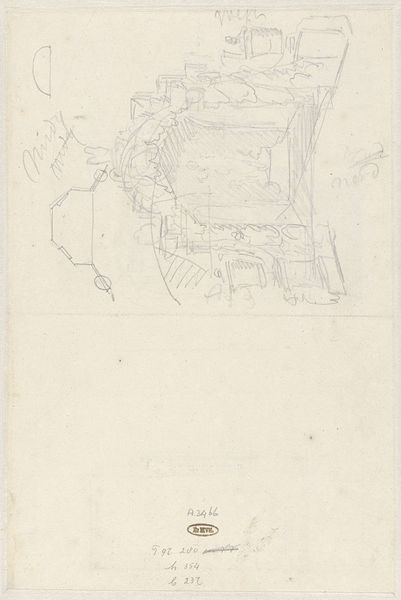
drawing, paper, pencil
#
drawing
#
sketch book
#
landscape
#
paper
#
form
#
pencil
#
line
Copyright: Rijks Museum: Open Domain
Willem Roelofs made this landscape drawing with a pencil on paper. He was a key figure in the Hague School, a group of Dutch landscape painters active in the second half of the 19th century. Here, the rapid strokes and unfinished quality give the drawing an air of spontaneity, capturing the essence of the Dutch countryside. Roelofs's work reflects a growing interest in representing the natural world as it appeared, without idealization. This shift aligns with broader social and cultural changes in the Netherlands, including a rising middle class with a taste for unpretentious art, and a growing art market with an infrastructure of galleries and critics. To fully understand Roelofs's work, we might examine exhibition reviews of the period. These resources help us understand the changing role of landscape painting in Dutch culture. Art is always a product of its time, shaped by prevailing social and institutional forces.
Comments
No comments
Be the first to comment and join the conversation on the ultimate creative platform.
